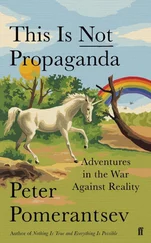3 Title page THIS IS PHILOSOPHY OF SCIENCE AN INTRODUCTION FRANZ-PETER GRIESMAIER JEFFREY A. LOCKWOOD
4 Copyright
5 Preface
6 Acknowledgments
7 About the Companion Website
8 1 Pillars of Science: Reasons, Knowledge, and Truth 1.1 Epistemic Reasons1.2 Reasoning from Evidence1.3 Knowledge and Truth1.4 Facts, Hypotheses, and Theories1.5 Conclusion
9 2 Evidence, Observation, and Measurement 2.1 The Promises of Evidence2.2 Basic Evidence and Derived Evidence2.3 Measurement2.4 Conclusion
10 3 Uses of Evidence 3.1 From Observation to Hypothesis3.2 Theory Appraisal3.3 The Demarcation Problem3.4 Conclusion
11 4 Evidence, Rationality, and Disagreement 4.1 From Weak to Strong Evidence4.2 Evidence and Rationality4.3 Explaining Scientific Disagreement4.4 Conclusion
12 5 The Nature of Probability 5.1 Basics of Probability5.2 Interpretations of Probability5.3 Probabilities as Credences5.4 Epistemic Probabilities5.5 Probabilities as Objective Chances5.6 Probabilities and Defeasible Reasoning5.7 Fallacies5.8 Conclusion
13 6 Do Not Be Misled: Confounds and Controls 6.1 Trials and Errors6.2 Treatment and Control6.3 Randomization6.4 Conclusion
14 7 Physical Experiments and Their Design 7.1 Historical Remarks7.2 Setting Experimental Parameters7.3 Dependent and Independent Variables7.4 Learning from Experiment7.5 Types of Errors: Pick Your Poison7.6 Relationships between Experiment and Theory7.7 Conclusion
15 8 Experimental Methods That They Don’t Teach 8.1 Found and Natural Experiments8.2 Thought Experiments8.3 The Structure and Evidential Value of Thought Experiments8.4 Learning from TEs8.5 The Ubiquity of Thought Experiments8.6 Are Computer Simulations Thought Experiments?8.7 Conclusion
16 9 Models: Useful Lies and Informative Fictions 9.1 The Nature of Models9.2 Modelling Techniques9.3 Analogies9.4 Learning from Models9.5 Conclusion
17 10 Causation and Causal Inference 10.1 What’s the Problem with Causation?10.2 Hume’s Challenge10.3 Causation as Mere Regularities10.4 Conserved Quantities to the Rescue?10.5 Causation and Manipulation10.6 Conclusion
18 11 Strange Causation – Time Travel and Remote Action 11.1 On Influencing the Past11.2 Quantum Mechanics and Locality11.3 Conclusion
19 12 But Is Any of It Real? 12.1 Theories and Truth12.2 A Map of the Views12.3 Are Groups Real?12.4 Laws of Nature12.5 Is Everything Real Observable?12.6 Realism vs. Antirealism12.7 Structural Realism12.8 Realism and Explanation12.9 Conclusion
20 13 Explanation and Understanding 13.1 The Deductive-Nomological Model13.2 The Causal Model13.3 The Unificationist Model13.4 The Pragmatic Model13.5 What about Realism?13.6 Conclusion
21 14 Explanation and Understanding 14.1 The Layer Cake Model14.2 Classical Reductionism14.3 Functional Concepts14.4 The Functional Model14.5 Emergence14.6 Interdisciplinary Research14.7 Conclusion
22 15 Scientific Progress 15.1 Science and Technology15.2 Goals of Science15.3 Reduction in the Limit15.4 How Theories Are Born15.5 What Kind of Progress?15.6 From Theories to Research Programmes15.7 Methodological Anarchism15.8 Incommensurability15.9 Structural Realism and Progress15.10 Conclusion
23 Index
24 End User License Agreement
1 Chapter 1Figure 1.1 Forms of...
2 Chapter 4Figure 4.1 Extrapolation risk.Figure 4.2 What Do You See?...
3 Chapter 8Figure 8.1 Newton’s bucket experiment.Figure 8.2 Newton’s spinning globes.Figure 8.3 Low entropy.Figure 8.4 High entropy.Figure 8.5 Maxwell’s “demon”.Figure 8.6 Classification of thought experiments.
4 Chapter 9Figure 9.1 Vienna street map...Figure 9.2 Vienna subway map...Figure 9.3 Bohr’s hydrogen model.Figure 9.4 Electron shells...Figure 9.5 Modelling techniques...
5 Chapter 10Figure 10.1 World lines.
6 Chapter 11Figure 11.1 Light clocks.Figure 11.2 Spatial curvature.Figure 11.3 Gravitational curvature.Figure 11.4 Light bending.Figure 11.5 Time travel.
7 Chapter 12Figure 12.1 Views...
8 Chapter 13Figure 13.1 The Deductive-nomological model.Figure 13.2 The Inductive-statistical model.Figure 13.3 Shadow reckoning.
9 Chapter 14Figure 14.1 AND-gate.
10 Chapter 15Figure 15.1 Kuhn’s model...
1 Cover
2 Series page THIS IS PHILOSOPHY Series editor: Steven D. Hales Reading philosophy can be like trying to ride a bucking bronco – you hold on for dear life while “transcendental deduction” twists you to one side, “causa sui” throws you to the other, and a 300-word, 300-year-old sentence comes down on you like an iron-shod hoof the size of a dinner plate. This Is Philosophy is the riding academy that solves these problems. Each book in the series is written by an expert who knows how to gently guide students into the subject regardless of the reader’s ability or previous level of knowledge. Their reader-friendly prose is designed to help students find their way into the fascinating, challenging ideas that compose philosophy without simply sticking the hapless novice on the back of the bronco, as so many texts do. All the books in the series provide ample pedagogical aids, including links to free online primary sources. When students are ready to take the next step in their philosophical education, This Is Philosophy is right there with them to help them along the way. This Is Philosophy, Second Edition Steven D. Hales This Is Philosophy of Mind Pete Mandik This Is Ethics Jussi Suikkanen This Is Political Philosophy Alex Tuckness and Clark Wolf This Is Business Ethics Tobey Scharding This Is Metaphysics Kris McDaniel This Is Bioethics Ruth F. Chadwick and Udo Schuklenk This Is Philosophy of Religion Neil Manson This Is Epistemology J. Adam Carter and Clayton Littlejohn This Is Philosophy of Science Franz-Peter Griesmaier and Jeffrey A. Lockwood Forthcoming: This Is Environmental Ethics Wendy Lee This Is Philosophy of Mind, Second Edition Pete Mandik This Is Modern Philosophy Kurt Smith
3 Title page THIS IS PHILOSOPHY OF SCIENCE AN INTRODUCTION FRANZ-PETER GRIESMAIER JEFFREY A. LOCKWOOD
4 Copyright
5 Table of Contents
6 Preface
7 Acknowledgments
8 About the Companion Website
9 Begin Reading
10 Index
11 End User License Agreement
1 i
2 ii
3 iii
4 iv
5 v
6 vi
7 vii
8 viii
9 ix
10 x
11 xi
12 xii
13 1
14 2
15 3
16 4
17 5
18 6
19 7
20 8
21 9
22 10
23 11
24 12
25 13
26 14
27 15
28 16
29 17
30 18
31 19
32 20
33 21
34 22
35 23
36 24
37 25
38 26
39 27
40 28
41 29
42 30
43 31
44 32
45 33
46 34
47 35
48 36
49 37
50 38
51 39
52 40
53 41
54 42
55 43
56 44
57 45
58 46
59 47
60 48
61 49
62 50
63 51
64 52
65 53
66 54
67 55
68 56
69 57
70 58
71 59
72 60
73 61
74 62
75 63
76 64
77 65
78 66
79 67
80 68
81 69
82 70
83 71
84 72
85 73
86 74
87 75
88 76
89 77
90 78
91 79
92 80
93 81
94 82
95 83
96 84
97 85
Читать дальше












